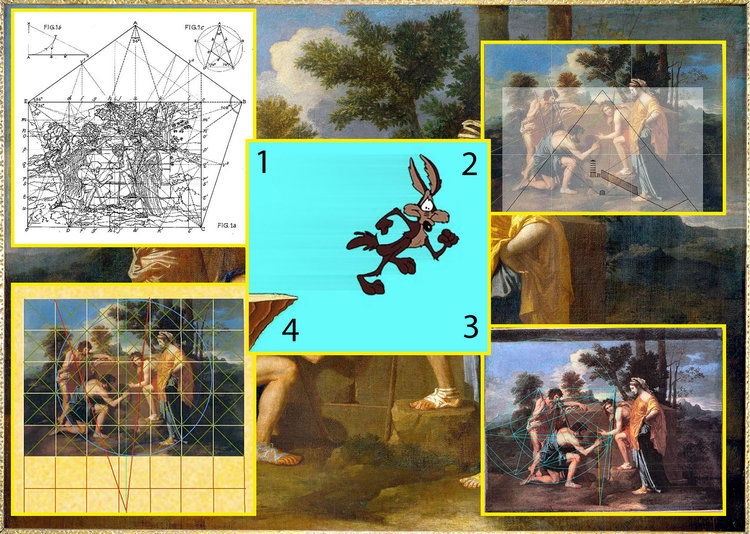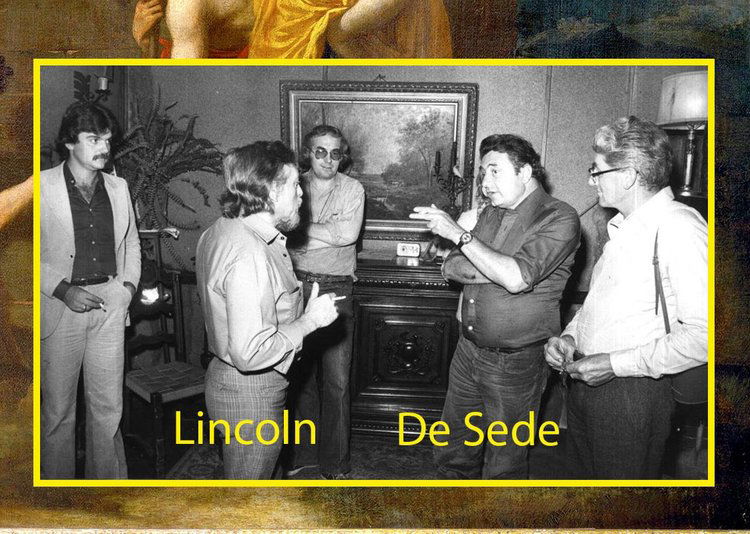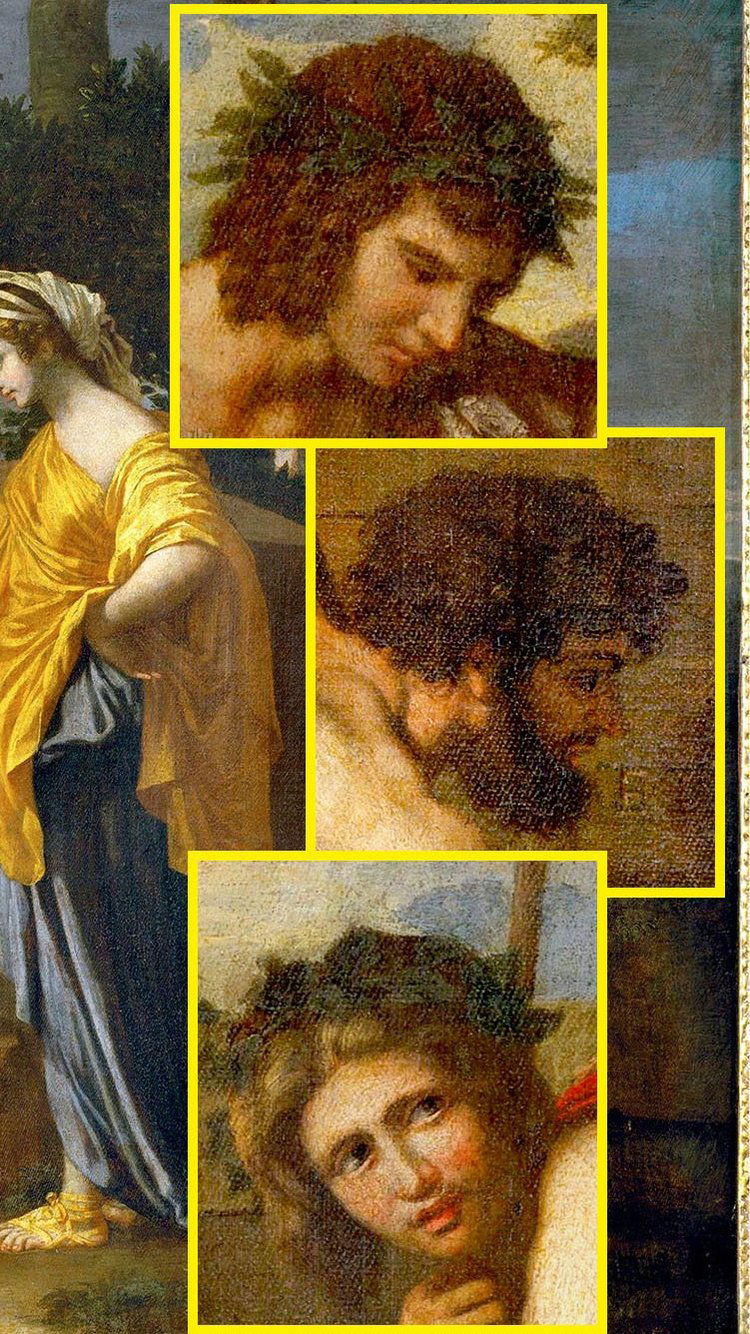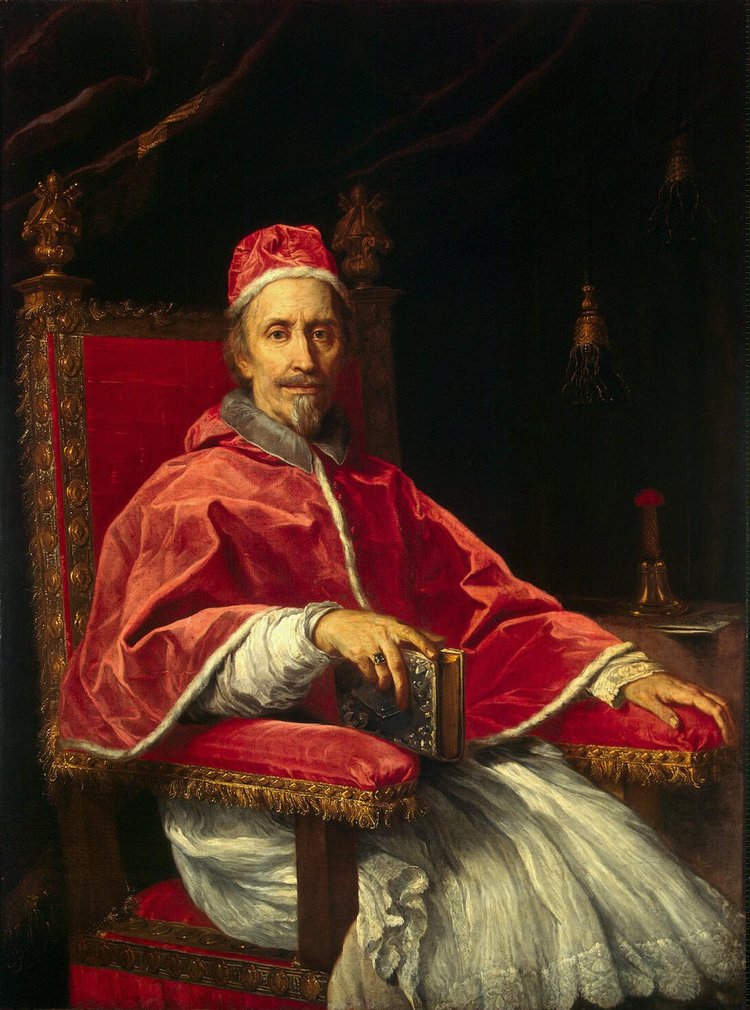April 9, 2019 by Aengus DewarNicholas Poussin - ‘The Arcadian Shepherds’ - 1638/9 - Louvre, Paris - Oil on Canvas
In one respect or another, everyone is a snob. From time to time, all of us find it comforting to sneer at a crass and inferior species hovering pathetically at lower altitudes. Some evolutionary component in our brains clicks nicely together when we can reassure ourselves, in spite of our failings, we’re not quite the last runner in the race, and certainly not the most vulgar. When it comes to the creative fields, the conventional indication that you’re looking at tasteless pond scum is popularity. The more appeal someone has, the deeper down the social strata their reach extends, the more likely it is – so we are led to believe - that they’re crap. This is why Stephen King will never be shortlisted for the Booker prize, even though he’s often been ten times the story teller and crafter of characters than many who have. He’s too chummy with the tastes of hoi polloi.You’ll be unsurprised to hear that I’ve never trusted this way of sieving the wheat from the chaff. For me, the signpost of popularity doesn’t always point to Hell. Charles Dickens churned out well-liked stories in a cheap journal at a rate most writers couldn’t manage with amphetamines. Naturally, his success and standing with ordinary people raised the hackles of some of the more elevated literary figures of the time who aimed poisoned darts at him. Yet he’s withstood the posterity test much better than many of them have. This is why I’m going to resist the urge – and it’s strong – of starting our examination of Poussin’s ‘The Arcadian Shepherds’ by immediately bashing Dan Brown. Dan, in The Da Vinci Code, hints a couple of times that Poussin stuffed paintings like this with esoteric riddles that concealed ancient conspiracies. Templars, Rosicrucians, the Holy Grail: you get the idea. It’s all guff. Nothing of the sort is going on. But rather than stick my nose in the air and get sniffy about a popular writer, I’ll just walk you through it. Once we’ve cut back some of the brushwood, you’ll see that Poussin was pursuing something a good deal more ambitious than anything cooked up by the conspiracists.Of course, Dan Brown is not the only guilty party. Since the 1970s, there’s been a stream of people making outlandish claims about the painting. To be fair to them, it is a rather puzzling and mysterious image. Three shepherds and a patrician looking Grecian lady are gathered around a tomb. This doesn’t overlap with any widely known mythological or biblical story, nor even any historical incident. When an artwork is vague, it has always been the case that any commentary can be projected on to it by those of a mind to try. A lot of high profile modern art falls into this category. Too ambiguous to communicate something clear-cut, it becomes the intellectual property of anyone who cares to cook up a half-assed explanation of their own. Inevitably, it’s the ideas of the most persistent voices that start to stick, no matter how bombastic or laughable they are. This, in a way, is what has happened with ‘The Arcadian Shepherds’. Over the last fifty years, a cast of treasure hunters and mystery solvers have found within the painting what they believe are clues that will help them in their search. Thanks to their enthusiasm and perseverance, these claims have trickled into the mainstream more so than others of a more temperate variety. Poussin, they argue, was a sort of all-knowing panjandrum within a secret society. He painted into this picture a cryptic key that could be read only by other members. And they are around us even to this day; mysteriously, silently biding their time.











Now that we’re boned up on Poussin’s bedside reading, it’s easy to grasp what is happening with the shepherd in blue. We’re watching a man discover a craft which can deliver a form of life after death. If we look closer though, we spot something disconcerting. The shadow cast on the tomb by the shepherd’s outstretched arm doesn’t follow the lie of his anatomy. Instead, it has the unmistakable shape of a scythe blade. Scythes are synonymous with death in the modern mind. We forget that for previous generations they had a meaning which was bit more nuanced. They could just as easily indicate time or mortality. Poussin wants us to know that this is a man whose existence is subject to the march of time; a man who is inseparable from his mortal nature. We are being reminded that his life – like that of all of us – is no more than a brief flicker. Only through the discovery of art, will he move beyond this limitation. It’s interesting to see how his breakthrough is about to be made on the face of the tomb – the seat of Death - rather than somewhere else. It’s as if a chipmunk was poking a wolf in its eye. Yet nothing in the inert tomb can reach out to stop the shepherd’s progress. He’s on the threshold of a triumph. For me, this confirms the pale lady is Victory; at least partially. She watches from the side, patiently waiting as the shepherd stumbles closer to his flash of realisation. It looks as if he’s only moments away. But what about the two other shepherds?
Features & Faces

The first thing we ought to note about the shepherds in red and white is that each is crowned with a laurel wreath. In the ancient world, wreaths could make an appearance on all manner of occasions. They were normal at religious rites and festive events such as a wedding or a rowdy all-night booze up. But it’s as a symbol of triumph and victory that they’re best known. It seems to me that both these figures have already acquired the understanding that their un-wreathed companion is groping towards. As a result, they’ve been crowned by Victory. Poussin nails down their transformation from rural rubes to enlightened champs with a clever trick. Have a look at their faces. These guys are not the leathery herdsmen we might expect. Compare them to the kneeling shepherd. The latter has an unruly beard and a stubby, rustic physiognomy. The others are whiskerless and refined looking. They each have the sort of well proportioned face that’s sported by the guy who groped himself disturbingly in the 2018 Paco Rabanne PURE XS advert. (It’s on Youtube, if you really need to). They’ve more than a touch of the pale lady’s classical appearance as well. Poussin is too thoughtful for this contrast to be a coincidence. We’re supposed to spot that these men have been elevated, improved and in some sense immortalised by the knowledge they’ve gained.
The Ascent Of Man

To my eye, Poussin has set up the three shepherds in a deliberately graded sequence. When I look at the trio, I can’t help thinking each of them is meant to represent a different point in a cycle of knowledge. The blue shepherd, although tantalisingly close, hasn’t yet figured out where the act of tracing the shadow can lead him. He’s in a state of ignorance and is presented to us in a kneeling position. He’s the lowest figure in the picture. The red shepherd points to the shadow cast by his companion’s head. The penny has just this moment dropped for him. He turns to Victory to check his intuition is correct. She confirms it is by placing a hand gently on his shoulder. This shepherd is in an unfolding state of revelation. He is presented in a crouch; not as lowly as his blue buddy, but not upright either. The white shepherd has already achieved insight. He looks on while his friends play catch up. He is in a state of knowing and is shown to us almost fully upright. All three use their staffs to support their weight. But the white shepherd also leans his body against the sepulchre. The fact that he can do this tells us that he is not afraid of what the tomb represents. His insight has dispelled his fear. In fact, with that languid stretched out arm of his, he seems almost to embrace the stonework. Kneeling, crouching, standing. This is no accident. It’s a carefully planned progression from ignorance through revelation and on to insight. Even the colours the shepherds wear seem to suggest this, moving from dark to light in step with their evolution. It’s hard not to think of the famous pictogram of the ascent of man. I believe there are good grounds to suppose Poussin had something similar in mind.
There are essential qualities which are crucial for a human being to rise from a state of ignorance to one of insight. We can’t expect to stumble up a ladder. A propelling force is needed. We had better investigate what Poussin thought that force should be. I don’t want to drag you too deeply into the world of Stoic philosophy in 17th century Rome. But we need to have a quick squint at it if we’re going to get a handle on things. Poussin moved in circles where this stuff was fully immersive and a way of life. Although it had pagan origins, by the 1630s, Stoicism had been squared agreeably with Christianity. Respectable sorts could publicly espouse it without fear of getting into trouble. And they did. Poussin was very much a part of this set. There’s a lot that we can say of the philosophy. But we’ll keep it simple. At its heart, it was a way of navigating life’s challenges with the head up and the chin jutting forward. It was realistic, useful and was supposed to be road tested daily in the real-world school of hard knocks. But it had an abstract side too. Here, there was a very heavy emphasis on Reason. It was thought to be a governing principle of the universe. It was supreme; it permeated everything; it was a living force. Those who searched would find the evidence for it in things like nature’s harmony and human virtue. In some respects, Reason was interchangeable with God. For a man of Poussin’s outlook, lowly shepherds wouldn’t have a prayer of navigating past Death unless they had the divine gas of Reason in their tank. We touched on the possible presence of this quality within the painting when we saw that the pale lady has been depicted with some of its attributes. For a Stoic, its inclusion would make a great deal of sense. Because of this, we can have some confidence that Poussin painted the pale lady as an amalgamation of two personifications. She is Victory. But even more so, she is Reason. I ought to explain how this claim stands up.</span>
<span>It might strike us as unlikely that a painter would use a single figure to represent two different qualities. But in other areas such stuff is normal. In religion, the combination of two entities is called syncretism. We find a good example of it with the merger of the Greek god Zeus and the Egyptian god Amun into the single god Zeus-Ammon, who became popular with an enthusiastic fan club around the time of Alexander the Great. There is no rule which states a painter couldn’t do the same with a pair of personifications in the 17th century. It’s also worth pointing out that the picture would lack coherence if Victory is the only quality present. Something worthwhile has to steer the shepherds towards their triumph. Without an improving force guiding their efforts, their attainment is just a stroke of good luck. It has no moral meaning or weight. Victory can’t play the role. Apart from anything else, she enters the equation - by definition - after an achievement, not before. Reason, on the other hand, is exactly the thing to push a humble shepherd onto the right path. We even have an occasion where Poussin as good as said it. ‘We should not let our judgement be guided by our desires alone, but by our reason,’ he remarked archly to a patron who was struggling to warm to one of his pieces. Once we grasp the importance of this quality to him, the picture and the arrangement of the three men becomes much more legible. It swims into focus as a parable for man’s improvement. With the help of Reason he wins insights that enable him to rise from his knees; so much so that he can find a form of victory over Death. Painting - as we might expect a painter to suggest - is his best weapon.
Seeing as we’ve had one quote from the man, we may as well mention another: ‘Drawing is the skeleton of what you do and colour is its flesh.’ For Poussin, there’s no question that painting has a structural logic. Like a tower of Jenga blocks, there are certain planks which are non-negotiable and can’t be removed without collapsing what’s balanced on top. Drawing is the main load bearing girder. We can see it in almost every work Poussin left behind. Clear, clean outlines are a hallmark of his figures. Everything is definite and precisely mapped. Nowhere in his work do we spot the more painterly, edgeless, blurry transitions that contemporaries like Rubens sometimes favoured. This probably explains his interest in Pliny’s account of how a traced outline of the human shadow gave rise to painting. For a precise draughtsman, this is a story with some resonance. But colour also mattered to Poussin. Et In Arcadia Ego would not be complete if the only reference to the art of painting was its skeleton. We should expect him to give a visual mention to the flesh too. To my eye, it’s there in plain view.
No two painters select exactly the same array of colours for their palette. But irrespective of their choice, there are a handful which must always be present. White is sacred; it is the light which reveals form. Black is too; without shadow, there is none of the contrast which enables light to work its magic. The two are the inseparable yin and yang of visual representation. But black can be fashioned by combining other colours. For that reason it doesn’t have quite the same cardinal significance. Those that do are red, blue and yellow. This trio alongside white form a supreme quartet. When it comes to paint, almost every other colour with which we’re familiar is derived from some combination of the four. They are the parents, while the greens, greys, purples oranges, browns and pinks are their children. When we stop to look, we see that the big four have been arranged in a cluster of clothing on the right of the painting. On its own, there’s not much to write home about here. Certainly nothing meaningful. But when we spot how the red shepherd’s left arm emerges from the arrangement and points to his companion’s shadow, things take on a different feel. It’s as if he’s directing the cardinal colours towards the lines that are about to be drawn by the blue herdsman. In a way, we’re seeing a high-minded parallel with a child’s colouring book where the colouring pens are about to touch down within the printed outlines. The shepherd checks with Reason to see if he’s on the right track with his idea. We can see she approves. Line and colour, skeleton and flesh are about to be brought together. We are witnessing the birth of painting.
Giulio Rospigliosi - Carlo Maratta - 1669

While we’re in this area of the canvas, we’d better make mention of ‘R’. This is the letter against which the blue shepherd rests his finger. For many commentators, it’s a reference to the man who commissioned the painting, Giulio Rospigliosi. (It’s less of a tongue twister if, like an Italian, you barely pronounce the g in his surname.) Giulio held high offices in the Roman Curia which governed the Catholic Church. In time, he would be made a cardinal before navigating his way through the piranha tank of Vatican politics and becoming Pope Clement IX. He was an extraordinarily well educated and lettered bloke with tremendous enthusiasm for arts like music and painting. Some years before, he’d ordered a piece from Poussin. As is often the case with cultivated patrons, he’d dictated much of the content of the picture along with the themes he wanted it to address. In fact, there are excellent grounds to suppose it was Giulio who first coined the phrase ‘Et in Arcadia ego’. Because of this, it’s often supposed that Poussin highlighted the letter R to give due credit to the chap both as patron and innovator. I can see why people like this explanation. It’s persuasive and neat. But I’m not convinced. I think the R references something quite different. If you keep in mind the overall message we’ve uncovered within the picture, I’ve no doubt you’ll guess where I’m about to go with this.
R Is For Reason

R is the first letter of the word reason. This is also the case in Italian, the language Poussin spoke for most of his adult life: ragione. It is almost unthinkable that having painted a picture that proclaims this quality’s importance, the man drew our attention to its first letter coincidentally. As I’ve hinted several times, Poussin is one of the most thoughtful painters in the western canon. There are no accidents or flukes on his canvas. Et In Arcadia Ego is perhaps the most restrained, dignified and controlled piece he ever painted. We cannot expect that he’ll jab a finger at a letter unless it fits exactly with his subject. Spontaneously pointing out the name of a patron at the centre of the painting is too extraneous. It takes the viewer away from the contemplative truths Poussin is trying to help them explore. If the picture was a piece of verse, we could pose the problem as an awkward jarring line that doesn’t really rhyme or even follow time, prose now. See what I mean? The R must click smoothly into place within the overall scheme. For me, it is clear that the letter is brought to our attention so as to act as a helpful clue in identifying Reason as the hook on which everything hangs.
The Runners Up

Many artists will revisit a theme and paint it a second time. Poussin was no different. The picture we’ve been looking at had a forerunner that he completed a decade previously. This was also called Et In Arcadia Ego, and it was a much more straightforward effort. The shepherds here don’t have an answer to the skull that stares down at them from atop the tomb. There’s no sign of salvation through Reason or anything else for that matter. These guys are in the waiting room and there’s only one exit. This pessimistic theme began with an artist called Guercino, who painted the first Et In Arcadia Ego (yes, there are three of them) around 1620, ten years before Poussin’s first effort. There is something unbearably bleak about Guercino’s picture. If I’m honest, I don’t enjoy looking at it. It oozes gloominess, decay, corruption and death. Once again, the poor shepherds have no escape route. They’re passive, helpless witnesses to their own mortality. I think this morbid fatalism that Poussin once shared with Guercino, began to grate on him as he got older and more heavily steeped in Stoicism. When Giulio Rospigliosi tasked him with painting a new version (the churchman had also commissioned Guercino’s twenty years previously), it was a chance to attack the subject with a little more optimism and hopefulness.
It’s generally thought that Giulio heavily influenced Poussin’s intellectual approach to the painting. Until someone uncovers a stash of musty letters in a forgotten corner of a Vatican archive (good luck with that) we’ll never know for sure. But it’s very possible. We know the future pope was fascinated by the theme, and that the phrase et in Arcadia ego probably originated with him. Nonetheless, even if he had the cerebral firepower of a learned prelate at his disposal, Poussin had a tricky task on his hands. This is a painting that probes deeply metaphysical ideas. It takes us to places which are both more elusive and more theoretical than those explored by any abstract or conceptual artist over the last century. It is extremely difficult to convincingly address such intangible things with a single coherent image. It requires great skill in design and limitless invention. Normally, paintings that tread into this territory get busy and messy as more and more elements are introduced to do the necessary talking. But there’s none of that here. Like a great chef, Poussin uses the minimum of ingredients and cooks them exactly right. He gives us a simple, clean, beautifully balanced composition. There’s a purity to it. It’s a meditation. He’s at his absolute best when he paints like this. For me, if all his pictures were to disappear (there are a couple of hundred) and this was the only survivor, his reputation would still be secure.
Et In Arcadia Ego

There is something that has struck me forcefully as I’ve tried to map a path through this painting. The ideas Poussin put forward in Et In Arcadia Ego have, after a fashion, been proven right. Nearly four centuries ago, a man picked up a canvas then drew and painted on it. Et voila. It gave him a form of life after death. I mean, here I am writing and thinking about him. And here you are, wherever you are, reading and thinking about him. Something of him lives on. Ars longa vita brevis, goes the Latin refrain. Our lives are brief, but our art is long. There’s clearly some truth to this. Yet in spite of his endurance, I think Poussin is at times short-changed. He’s more often written about than he is looked at. His imagery can be so classical and remote that the casual viewer moves swiftly on, leaving him alone in the bloodless company of those who write monographs, articles and theses. But if we normal people were to slow down, look again and think a little, we’d be richly rewarded. Underneath that grown-up and serious style of his, Poussin delivers some juicy cuts. Even those who don’t – as we have – dig down to the bedrock ideas that underpin Et In Arcadia Ego can come away with something. They can take pleasure in the tendrils of mysterious meaning that reach out from the surface to brush briefly against us. It’s a rare type of artwork that can do this; that can whisper so suggestively from the wall without revealing an iota of what it contains. I suppose we shouldn’t be surprised that people in the 1980s got over-excited, mistook that subtlety for secrecy, and then dragged the picture into a world of codes, cloaks and daggers. It’s just a pity they missed the real message. But I don’t think we have.






















